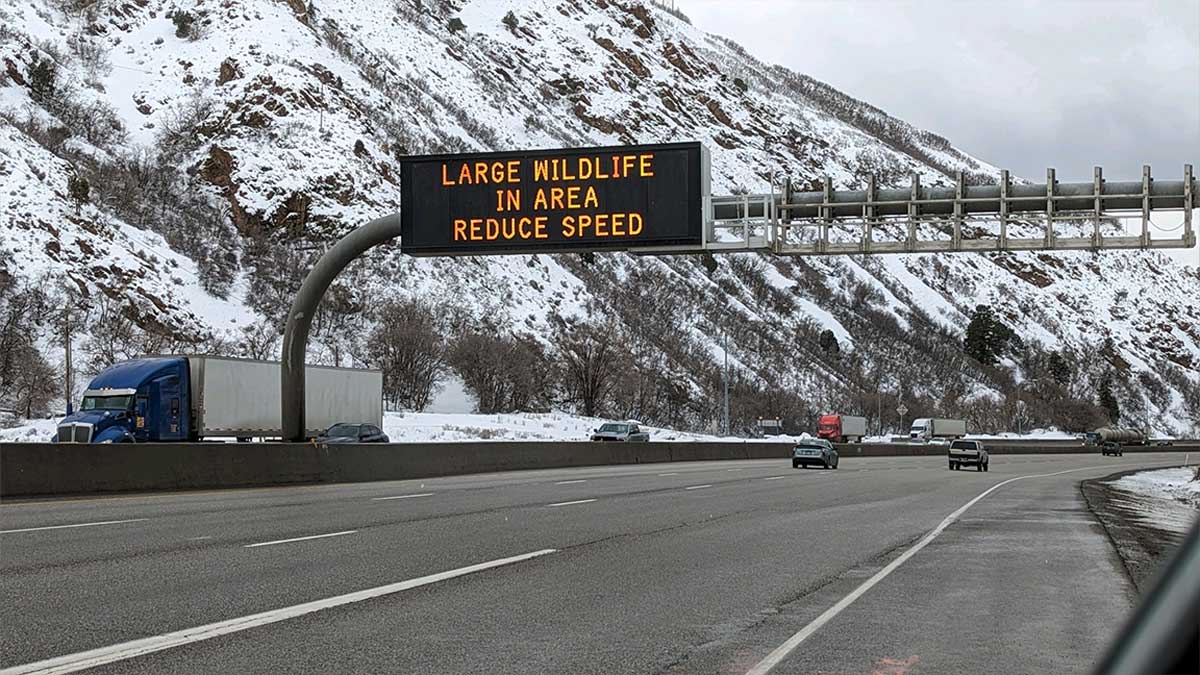11/3/2023 update:
According to the Public News Service, the governor of Utah signed legislation passed eight months earlier to build more wildlife crossings. See original 3/3/2023 post below.
—–
Help is on the way to better protect Utah elk, mule deer and other wildlife as well as drivers. Governor Spencer Cox recently signed a state budget bill into law that includes $20 million for wildlife crossings with federal match possibilities for up to $80 million more.
The Rocky Mountain Elk Foundation played a key role in helping push that legislation across the finish line. To set the table, RMEF worked with coalition partners in 2022 to secure $1 million in state funding combined with a four-to-one match of federal funds for wildlife crossing infrastructure.
“This year, the same coalition shot for $20 million in state funds,” said Bill Christensen, retired RMEF regional director currently serving as a legislative liaison. “Working with four other key representatives, we were able build a bipartisan team. With support of Representative Mike Schultz (R), Majority Whip, and Representative Doug Owens (D), along with members of four other groups, we met regularly with legislators and Governor Cox’s chief of staff. Our governor was always in favor and supportive throughout the process. We also worked closely with the Utah Division of Wildlife Resources and the Utah Department of Transportation.”
Studies show about 1,000 elk and 5,000 deer die each year on Utah’s roadways and vehicle-wildlife collisions cost Utah taxpayers almost $138 million in death, injuries and vehicle damage.
In addition to advocacy efforts by RMEF and others, Utah experienced several high-profile incidents involving elk that shined a spotlight on the need for action. In February, state officials lowered the speed limit to 60 miles an hour at the intersection of I-80 and I-84 about 50 miles east of Salt Lake City where vehicles hit 35 elk over a one-week span. And in March, vehicles struck and killed more elk that migrated into the Salt Lake Valley searching for forage after dealing with record snowfall in the mountains.
“I am excited that the state legislature took advantage of the federal four-to-one match,” said RMEF Regional Director Ron Camp. “These wildlife crossings will save countless animals as well as have a direct impact on the safety of our highways.”
Earlier in the 2023 session, RMEF hosted a breakfast for the Utah Legislative Sportsmen’s Caucus with many legislators in attendance. Camp conducted a presentation highlighting RMEF’s mission and accomplishments.
RMEF has 16 chapters and more than 5,300 members across the Beehive State. It also has a long history of conservation accomplishment. Since 1987, RMEF and its partners completed 812 conservation and hunting heritage outreach projects In Utah with a combined value of more than $167.8 million. Those projects conserved or enhanced 1,421,299 acres of habitat and opened or improved public access to 32,136 acres.
This latest commitment to wildlife crossings continues a pattern dating back to 1975 when Utah installed the first wildlife bridge in the nation on Interstate 15 near the small town of Beaver in the southern part of the state. Since then, Utah built more than 50 crossings statewide.
“This $100 million windfall for highway wildlife crossings is a real big win here in Utah,” said Christensen.
(Photo source: Utah Division of Wildlife Resources)
